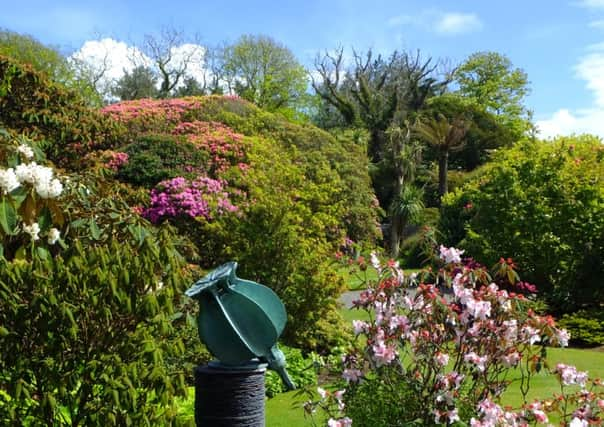The green-fingered can help halt a future crisis


Various reasons provoke visits to botanic gardens – the lure of tranquility, a fascination for the exotic or a plain interest in plants. However, whatever the motive it is hoped that for the enlightened visitor they will appreciate the intrinsic differences between a botanic garden and other green spaces in the city.
Anyone arriving at the Inverleith site – or any of our three regional gardens – ought to become quickly aware they have entered a world of ultra-high plant diversity. In Edinburgh alone we are surrounded by over 36,000 plants representing nearly 8,000 species from 163 countries. The garden is dynamic: a highly-specialised green space that acts like a flux for the river of biodiversity, suspended between the gains from the plant-rich Himalayas and the imposing Andes of South America – just two areas from where RBGE staff collect plants – and the inevitable loss to the compost heap.
Advertisement
Hide AdAdvertisement
Hide AdA fundamental area of research for RBGE is to identify and document species. From the moment this green river of biodiversity enters the system, the process of exploitation begins by botanists, horticulturists and educationists who revel in the extraordinary range of research opportunities. I and my colleagues have the task of squeezing every piece of information from these plants in order to feed this into the treasure trove of knowledge which underpins our ability to conserve native habitats and the plants they contain.
The reasons our organisation exists are straightforward. The air we breathe, the clothes we wear, the food we eat, the water we drink, and about 80 per cent of the medicines we use are dependent on plants. Man’s survival on this planet is integrally linked to the survival of plants.
On an annual basis, more than 2,000 new specimens come into the system. I and my colleagues have the task of extracting every piece of available information from these plants to feed it into the ever-growing treasure trove of knowledge that underpins our ability to conserve fragile habitats.
To put it in context, over 200 collections currently being grown here await to be officially described as new to science. This is an indication of the potential amount of plant life still to be discovered, described and, theoretically, utilised.
But none the research relating to living plants could possibly be undertaken without the cultivation skills of those who propagate and nurture the plants. Whether they care for plants in botanic gardens, public parks, garden centres, experimental stations, the agricultural industry or tend their quintessentially British allotments. Our dedicated, green-fingered horticulturists have the accumulated knowledge and skills that are necessary to cultivate the plants we need for food and shelter and from which to develop medicines.
Horticulturists are also increasingly vital for the cultivation of plants for restoring natural habitats damaged in the ever-growing list of man-induced activities that are contributing to the demise of our environment. Climate change is now top of this list and is considered by many to be a far bigger threat to mankind than terrorism.
To some it might be incredible to think that horticulturists, including the humble gardener, could play such a significant role and yet horticulture and related outdoor activities are still perceived as the sort of careers to follow if you can’t find a proper job! This perception is resulting in a skills shortage in horticulture and a recent report compiled by horticultural bodies, including the Royal Horticultural Society and the Institute of Horticulture, conclude that, unless we tackle this problem immediately, the UK will face a serious crisis in years to come.
This is all rather reminiscent of the futuristic film Silent Running. It depicts a time when plant life on Earth has become extinct and the last living specimens are housed in giant sealed domes aboard cargo ships. The Valley Forge has just four crew members including one with the knowledge and skills to tend the plants for the eventual reforestation of Earth.
Advertisement
Hide AdAdvertisement
Hide AdThis modern-day Noah’s Ark scenario is one in which I would use to illustrate the importance of horticulturists. In prioritising the human cargo for such a vessel I would not put woman and children first but instead those with the knowledge of how to grow plants including the humble gardener!
• Martin Gardner is coordinator of the Royal Botanic Garden Edinburgh’s International Conifer Conservation Programme. rbge.org.uk
SEE ALSO